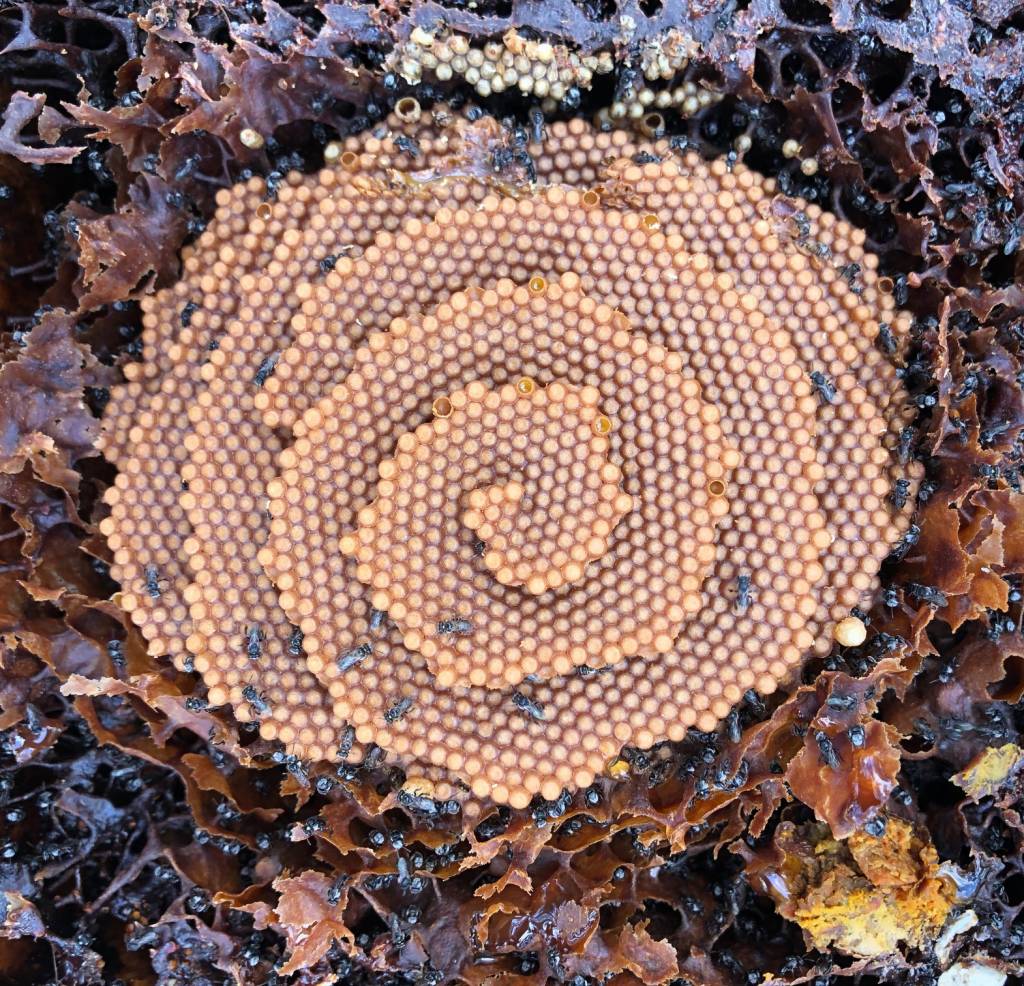Tetragonula Carbonaria known as the Australian stingless bee (and also abbreviated to TC). Are a species of small and stingless bee that is native to Australia. These bees are found in various habitats throughout the country including forests, woodlands, and urban areas and play a vital role in pollinating various plants and crops.
About Tetragonula Carbonaria
Tetragonula Carbonaria (TC) a black coloured bee is small in size, measuring in at only 4mm approx in length. Like other stingless bee species, the Tetragonula Carbonaria bee does not have a stinger and is considered harmless to humans. The bees can bite but this is very small and almost painless.

Distribution and Habitat
The natural distribution for Tetragonula Carbonaria is sub-tropical and goes from mid Queensland around Bundaberg to the southern end of NSW.
One characteristic of Tetragonula Carbonaria bees is to build their nests in hollows or crevices of trees, rocks, or even man-made structures, such as water meters, bags of potting mix or brick walls. The nests are made of a mixture of beeswax and plant resin. This mixture is called propolis. TC colonies create a unique shaped spiral or disc brood pattern. The bees use these nests to store honey and pollen and to rear their young. The average size of the nest is approximately 8L in volume.
TC can use a man-made hive called an “OATH”, Original Australian Trigona Hive. Using these hives, we can manage the hive effectively. We can propagate hives via splitting or budding, turning one hive into two. We can also extract valuable sugarbag honey.
Predators and Defence
The most common natural enemies of Carbonaria are Syrphid Fly, Phorid Fly and Hive Beetle.
Syrphid Fly will lay its eggs in any gaps of a hive. The eggs will hatch and try to gain access to the hive via these cracks or gaps. This is why we need to ensure that any gaps in a hive are sealed.
Phorid Fly will attack a hive using speed via the entrance. Phorid Fly is smaller and faster than stingless bees. If the hive has limited guard bees or no protective entrance tube, Phorid fly can speed past any protections.
Other predators include Bembix Wasps, Assassin Bugs, Spiders and Geckos but these are only minor and can only take one or two bees at a time.
Tetragonula Carbonaria will defend a hive using a long entrance tube inside the hive filled with guard bees to keep any enemies out. Entry and exit holes are kept to a minimum, often just one and are small in size, 8 – 12mm. If predators do make it inside the hive, Carbonaria can dab the invader with wax until it becomes entombed as a last resort. Defence or fighting swarms can occur when a bee from another unknown nest tries to enter a hive. The defending hive will send thousands of works out in a show of force. The result can be hundreds of dead bees.
Pollination
Tetragonula Carbonaria bees are important pollinators of various plant species, including fruit trees, vegetables, and native flora.
Why Have Stingless Bees?
Like other bee species, Tetragonula Carbonaria bees are facing threats from habitat loss, pesticides, and climate change. Due to their small size and appearance, they can often be mistaken for a pest species and unfortunately can have their colonies destroyed if people are not educated on native bees.
Efforts are underway to protect and conserve these important pollinators by promoting the use of native plants in gardens and urban areas and by providing artificial OATH nesting sites for Carbonaria bees to thrive. Additionally, the honey produced by Carbonaria bees can be harvested. Their honey is highly valued for its unique flavour and medicinal properties and is becoming increasingly popular.
Tetragonula Carbonaria Brood Pattern

Tetragonula Carbonaria Quick Facts
- The bees are stingless.
- A colony will have one queen who lays the eggs
- Carbonaria create approximately 1kg of honey called sugarbag
Looking to buy Tetragonula Carbonaria Native Bees contact us on 07 3206 0552 or info@abeec.com.au
